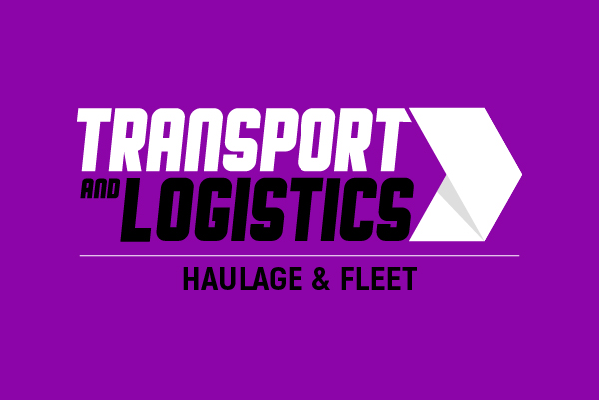After the Brexit transition period finally ended on 31st December 2020 and with Covid-19 protocols causing disruption to travel, it is clear that the logistics industry has seen a challenging start to 2021. Despite fair warning for businesses, there have been numerous reports of severely delayed journeys caused by increased customs documentation and ‘Brexit red tape’, exacerbated by the need for hauliers to provide negative Covid tests to travel. The required volumes of declarations has also led to significant wastage of fresh produce, damaging businesses and impacting whole sectors.
Indeed, some 3PL organisations actually halted deliveries in January to the EU or Northern Ireland due to the increase of documentation, showing the true impact of Brexit on supply chains. This not only disrupts logistics operations, but is fundamentally damaging to the UK economy. The government was reportedly encouraging UK companies to set up in Europe to avoid trade disruption, which would inflict companies with yet more costs and take capital away from the country. And with fears of a double-dip recession due to Brexit on top of the already fragile economy due to repeated lockdowns, it is clear that the economy is suffering.
Many have been prepared, but for those that haven’t and that may be in the midst of Brexit-induced disruption, how can a smooth declaration process be achieved in order to reduce issues at the border and prevent further economic loss?
Creating suitable borders
For organisations importing a large number of items the entire customs process can be significantly accelerated by implementing an ETSF (External Temporary Storage Facility) located at your own business’ site, away from the port. Goods arriving into the UK can be moved to your site (e.g. a business’ premises or distribution centre), where the customs formalities can be managed electronically. In other words, the customs border is effectively moved to your own premises, so customs declarations can be pre-lodged ahead of the goods arriving, enabling the site to operate as if it is the Customs Frontier from a HMRC and Border Force perspective, so long as it is running an approved ETSF solution. Additionally, an inventory system designed to group goods at truck-level could further strengthen the ETSF set up, meaning once a truck physically arrives at your site, the system will trigger the clearance of all it’s consignments so they can be appropriately managed.
An ETSF system gives visibility and audit records to HMRC and Border Force so that if they do want to put a hold on any consignment, the site operator knows instantly which goods are on hold awaiting paperwork or physical inspection – this can also be conducted at the operator’s site. Thereby ensuring smooth declaration processes and reducing the impact of delays and hold-ups at the port.
Certainties for Customs Clearances
As we have seen, ports such as Dover have faced severe disruption following the end of the Brexit transition period, delaying goods for more than half of UK companies trading with the EU. For trucks needing to transport goods, any clearances that can be moved inland will notably benefit supply chains, especially those looking to quickly clear and distribute or sell products on. This is especially relevant for organisations operating with JIT arrival of parts on trucks. Delays at the border will have a significant impact on their ability to do this, leading to loss of produce and resulting in extra costs.
Certain product categories still require clearance checks at the border for safety reasons, such as meat and dairy products. However, performing as many clearance checks as possible inland both speeds up the process for those vehicles that can go straight to the ETSF and also unlocks efficiencies for those that will still have to complete clearances at the border, benefiting companies that transport different items across multiple categories.
Businesses that import or export from the EU have to be fully aware of customs clearances requirements to protect their operations from economic loss. Import customers declarations from the EU will be required from July 2021. Safety and Security filings (S&S) for goods moving from the UK to the EU have been a major cause of disruption for haulage and freight companies, as customers are required to submit the shipping instructions up to 2 hours before arrival. This has caused significant disruption and extra costs to the wider supply chain, affecting both businesses and consumers. From 1st January 2022, safety and security filings will also be required from road carriers bringing goods into the UK from the EU.
In addition, traders, hauliers and carriers moving goods through a UK port using the Goods Vehicle Movement Service (GVMS) are now required to register with the HMRC for the service in order to transport goods through customs. The extra red tape and permissions needed can cause unnecessary delays and disruption if organisations are not successfully registered for the GVMS. Companies should consider having a solution that incorporates the paperwork required to easily move goods, in order to optimise the process. By ensuring certainty of their own clearances, businesses can avoid hold-ups and unlock efficiencies where possible to reduce the risk of further economic damage.
The lesson from the end of the Brexit transition period is that companies need to act now and not wait until deadlines if they want to operate without disruptions.
Minimising Disruption
Now the transition period has ended, businesses need to capitalise on smart solutions to mitigate any more disruption due to Brexit, and with Covid protocols impeding the movement of goods, the time to act is now.
With Brexit causing much uncertainty, a streamlined import or export process that effectively manages customs clearances can help to support the already struggling UK economy. A double-dip recession is a serious concern and the economy is performing poorly. Covid will continue to be a challenge for the remainder of 2021 but companies have the opportunity to prepare against further Brexit disruption and introduce some certainty and security into their cross-border operations.














